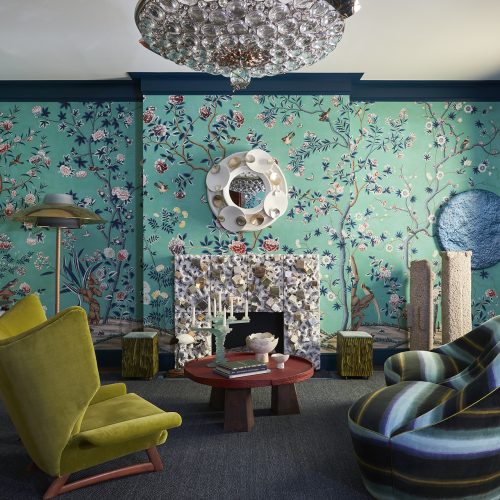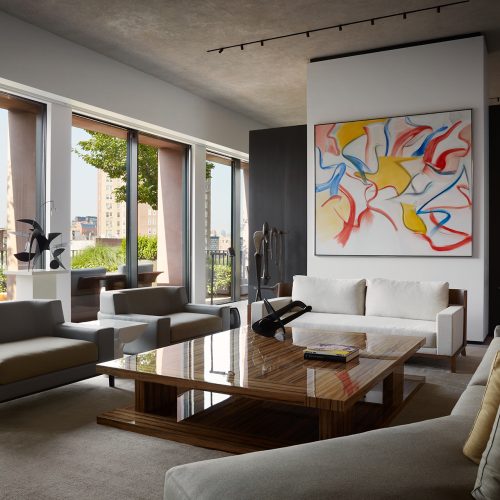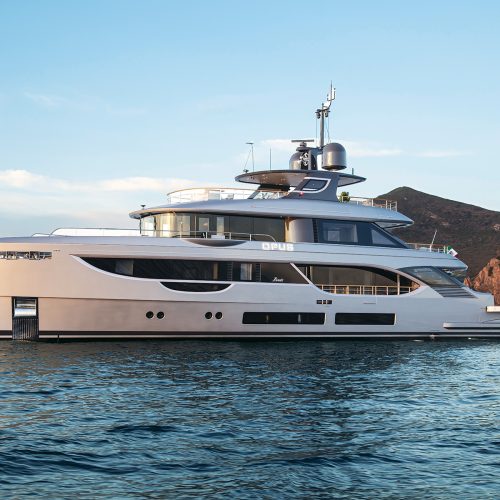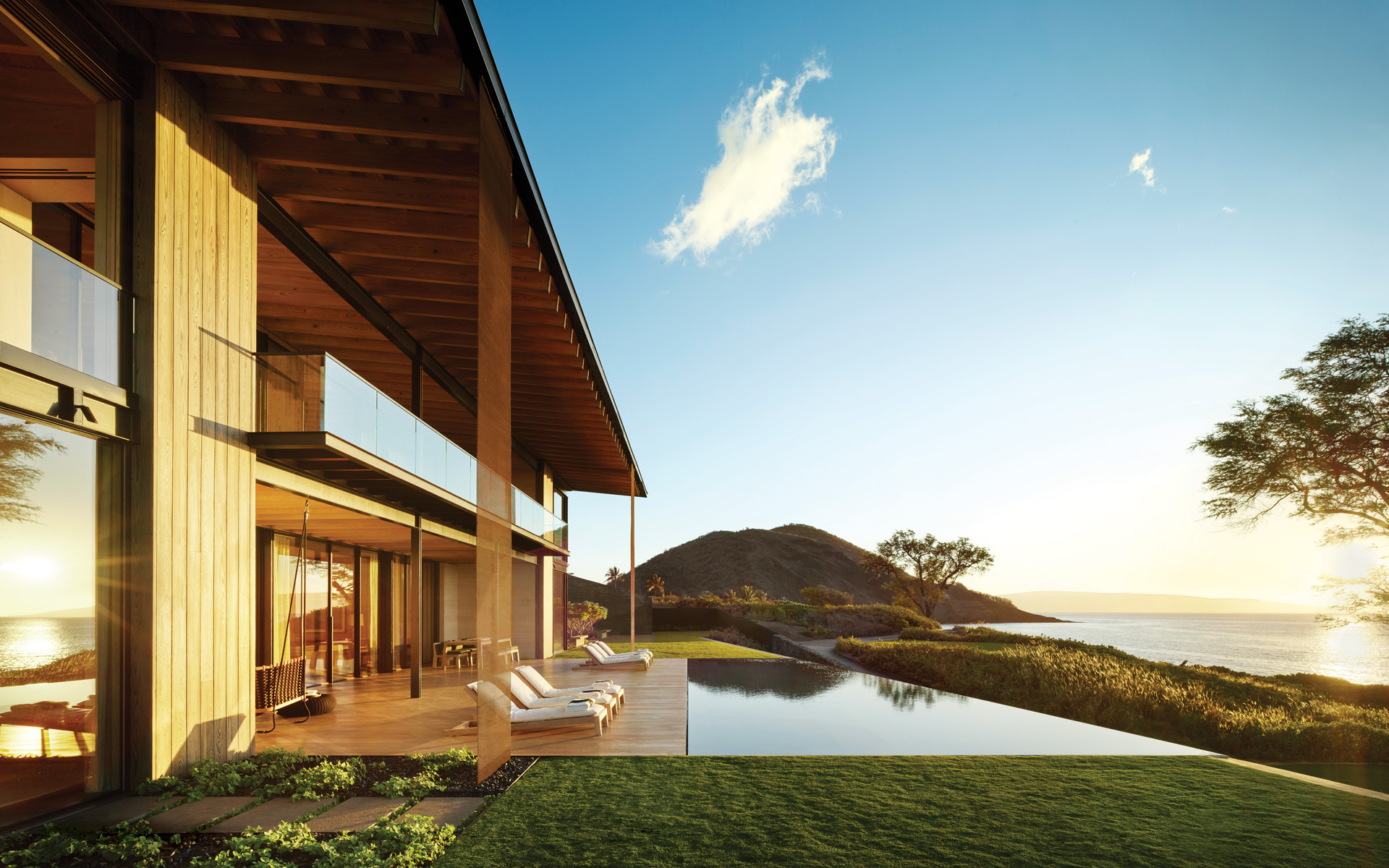

This Architectural Marvel in Hawaii Lives Up to Its Breathtaking Setting
A dream getaway, devised by Walker Warner Architects and interior designer Matthew Leverone, pulls inspiration from the spectacular Maui coastline
The San Francisco–based firm Walker Warner Architects is well-known for creating elegantly spare residences that are thoroughly and thoughtfully integrated into their settings. “Much of what we do is what I call contextual architecture,” says cofounder Greg Warner. “It has a lot to do with the natural surroundings.”
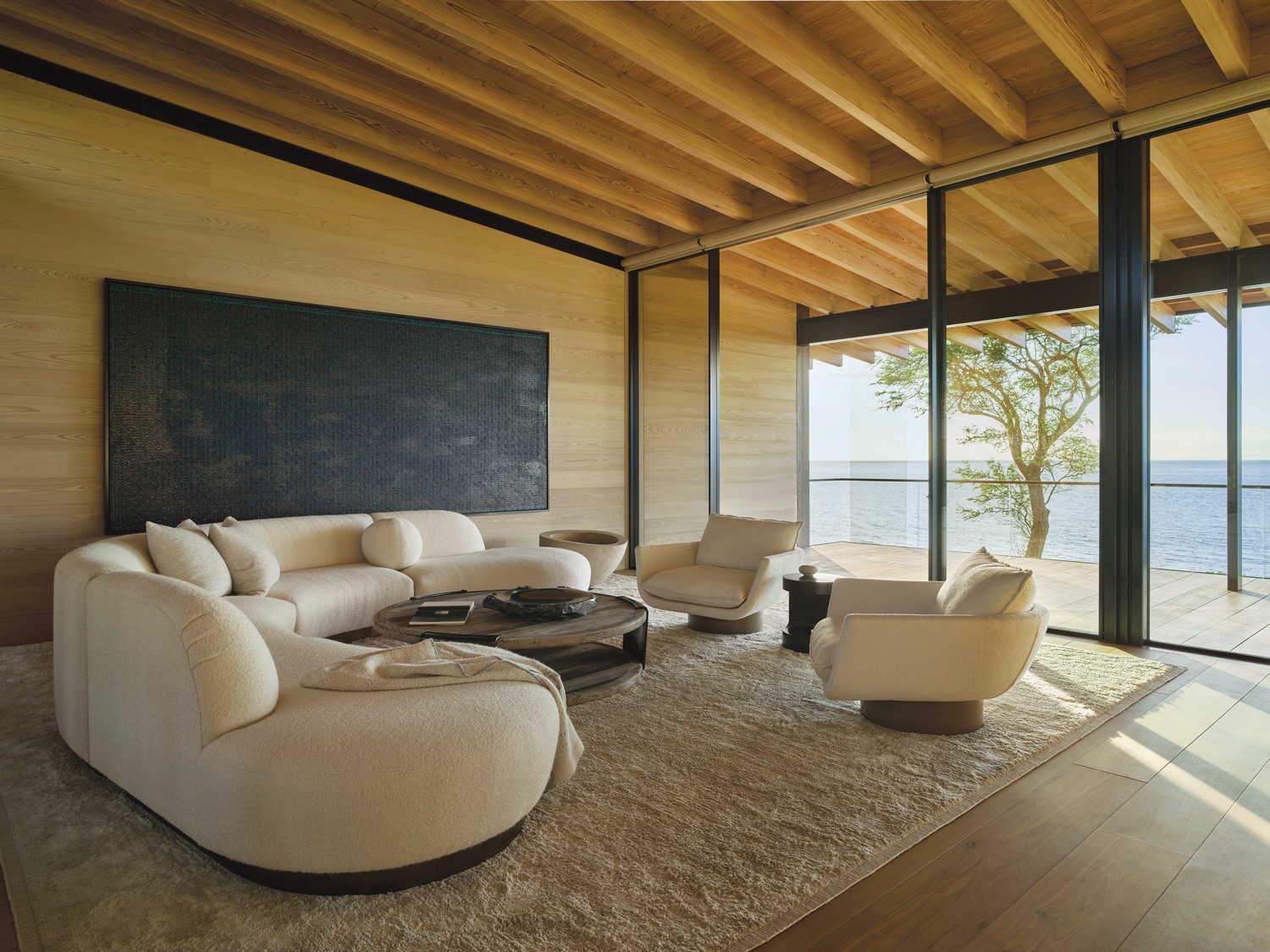
In the living area, a curvy sectional sofa by Coup Studio and a pair of Yabu Pushelberg armchairs are arrayed around a Liaigre cocktail table atop a shaggy Stark carpet. A wall of bleached and wire-brushed bald cypress serves as the backdrop for a Young-Il Ahn painting, the room’s reclaimed teak floors extend out onto the terrace, and glass walls by Vitrocsa can be opened to maximize ventilation. Photo: MATTHEW MILLMAN
The company’s respectful approach, including an emphasis on environmental responsibility, has made it a favorite among clients looking to build houses in Hawaii, where, Warner estimates, they have completed around 30 projects. A striking recent example is a house designed for a couple on Maui, perched on a spectacular oceanfront site along the island’s western coast. The owners, now empty nesters, first met on Maui, and they wanted to build a getaway in a place rich with personal meaning. In addition to hiring Walker Warner, they enlisted interior designer Matthew Leverone and landscape designer Ron Lutsko Jr. (both based in San Francisco as well) to round out the collaborative design team.
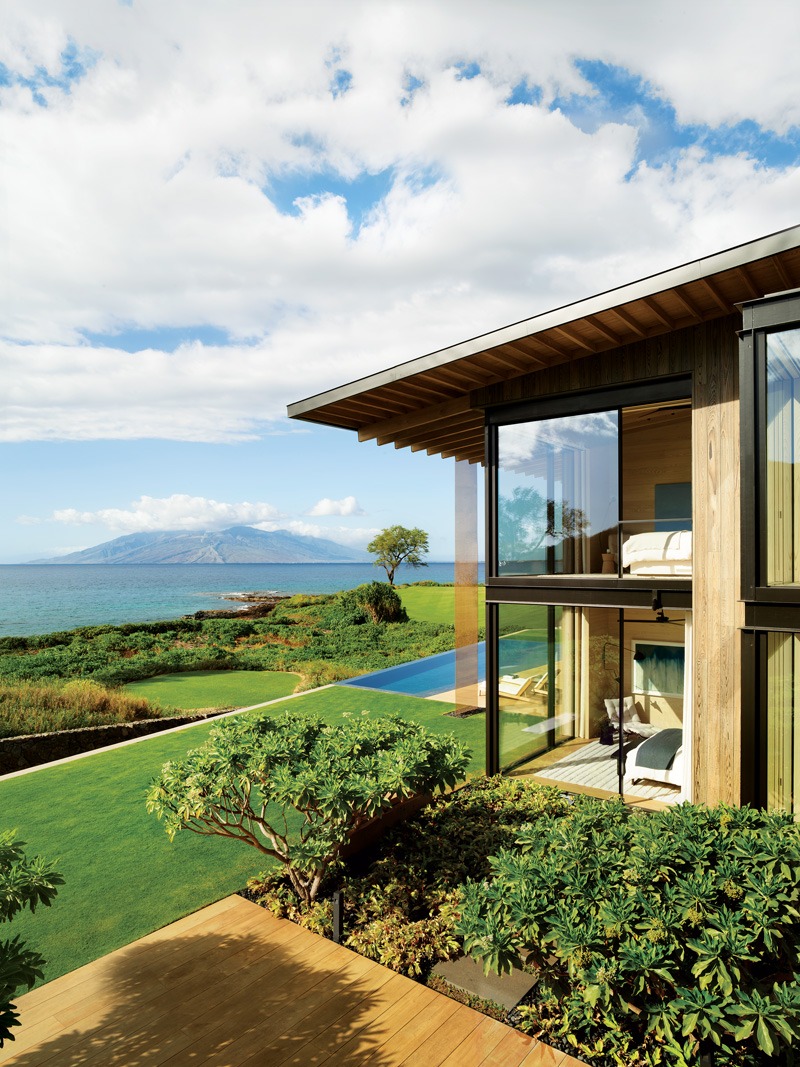
The grounds, landscape designer Ron Lutsko Jr. notes, go from “being quiet and introspective in the front to opening up to the dramatic view.” Photo: MATTHEW MILLMAN

In the husband’s office, a Jørgen Kastholm chair is paired with a Vladimir Kagan desk; the floor lamp is by David Weeks Studio, and the custom mohair carpet is by Tibetano. Photo: MATTHEW MILLMAN
“The clients didn’t want anything to take away from the setting, so the house is not overfurnished”
Matthew Leverone
From the entry gate at the front of the property, the house appears to be a single-story modernist structure composed of glass, steel, and warm-toned concrete. But as you approach—walking along a reclaimed-teak path shaded by a perforated brass canopy that casts pixel-like shadows—the home’s scale and sweeping views gradually unfold.
The heart of the house is a large, open space containing the kitchen and the living and dining areas, which are separated from the entrance gallery by a wall of louvers that can be opened to maximize light and views or closed for shade and privacy. Off to the sides are the primary suite and the husband’s office, all of which are wrapped in floor-to-ceiling glass for unimpeded vistas.

A painting by Callum Innes hangs at the end of the entrance gallery, which features a cypress ceiling and wall of louvers than can be opened and closed; the bench is by Hamacher, the rug is by Fort Street Studio, and a vintage Willy Guhl concrete Loop chair stands on the terrace. Photo: MATTHEW MILLMAN
Because the property drops off as it slopes toward the beach, the architects were able to tuck an entire lower floor beneath the main level. The downstairs contains two guest bedrooms, a family room, and a den that doubles as an office for the wife. Outside, an expansive terrace and swimming pool overlook the ocean.

Walker Warner Architects topped the LEED Silver–certified house with a slanting, cypress-and-steel roof that features deep overhangs to provide shade. Custom copper-mesh rain curtains by Cascade Coil Drapery descend from the roof’s edge on either side of the pool terrace, which is furnished with James Perse chaise longues. Matthew Leverone oversaw the decor, and the gardens were designed by Ron Lutsko Jr. Photo: MATTHEW MILLMAN
Capping the entire structure is a gently sloping roof, with a deep overhang that Warner likens to a visor, shading the home’s west side from direct sunlight and reducing heat gain. To help with cooling, the architects designed the house—which is LEED Silver certified—to maximize cross-ventilation and natural light, making the glass doors and windows as tall as possible. Visually, the dark-metal-framed windows contrast with the soft colors of the concrete and weathered cypress used throughout. Both materials were chosen for their durability, given the corrosive salty air, as was the reclaimed teak that was selected for floors and decks, creating a “fusion” between textures inside and out, says Warner, who grew up on the Big Island.
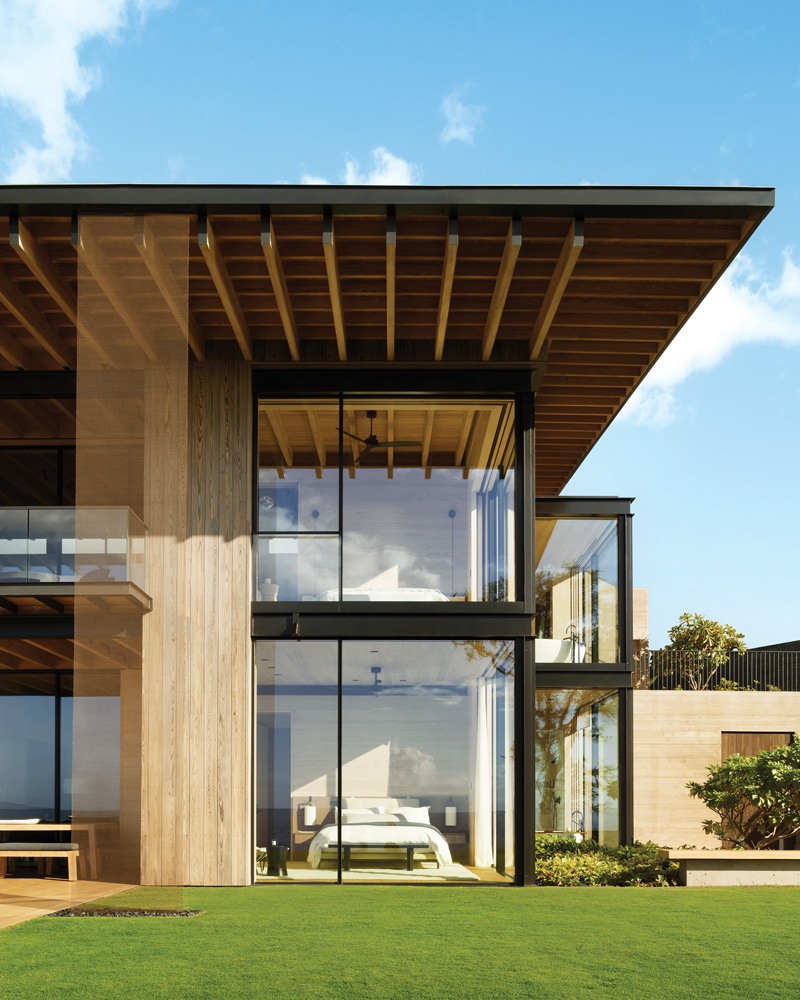
The materials used on the home’s exterior—cypress, teak, concrete—were chosen for their durability in the salty ocean air. Photo: MATTHEW MILLMAN
And texture, Leverone explains, is “super important” in the home’s interiors. Neutral-toned upholsteries—alpaca bouclé, linen—and handwoven pillow fabrics help create a richly understated backdrop. “The clients didn’t want anything to take away from the setting, so the house is not overfurnished,” Leverone says. “A sense of craftsmanship was important.” There are vintage pieces like the concrete chairs by Willy Guhl on the entry terrace and the elegantly angular Pierre Jeanneret chair in the den. The husband’s office is anchored by a new production of Vladimir Kagan’s 1970 Wing desk. Complementing these modern classics are contemporary pieces by Kaspar Hamacher, Eric Schmitt, Yabu Pushelberg, and James Perse, among others.
The owners also collect art, and Leverone and the couple worked closely with art consultant Tom O’Connor. They went to fairs such as Art Basel in Miami Beach, Frieze, and TEFAF, acquiring works like the lushly textured painting by Young-Il Ahn that hangs in the living area, the large Callum Innes painting in the entry, and the color etchings by Anish Kapoor in a guest bath.
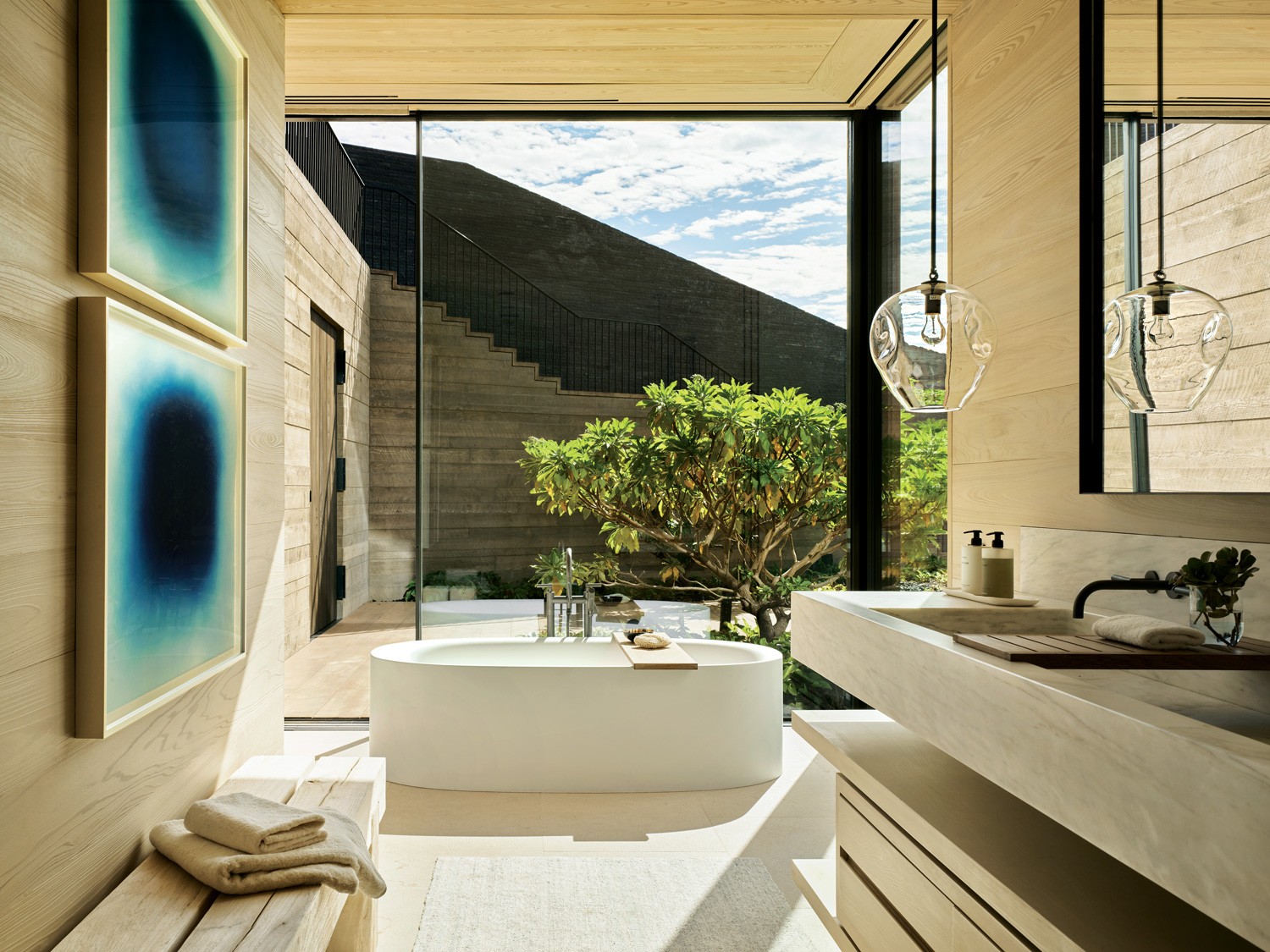
Anish Kapoor etchings Breathing Blue 1 and Breathing Blue 4 add a splash of color above an Andrianna Shamaris bench in a guest bath, where the Boffi tub overlooks a courtyard; Lindsey Adelman Studio pendants hang above the Calacatta Delicato marble vanity created by CoorItalia, the sink and tub fittings are by Watermark Designs, and the rug is by Nasiri Carpets. Photo: MATTHEW MILLMAN
When it came to the grounds, Lutsko says his aim was to “elevate the qualities of the existing landscape but not imitate them,” explaining, “I don’t believe in mimicking nature.” The walls of stacked lava strips that define the front courtyard and the sides of the property are “how we acknowledge the place,” he explains. Native taros, with their large leaves, are placed around the house, while kiawe trees—originally from Colombia but now found “all over Hawaii,” Lutsko says—were planted. Outside a lower-floor bedroom, four heliotrope trees will grow to shade the courtyard in which they’re planted. The grounds, Lutsko notes, go from “being quiet and introspective in the front to opening up to the dramatic view” in back. It’s a pretty decent summation of this serene sanctuary, which adds up to an utterly harmonic whole.
A version of this article first appeared in print in our 2021 Spring Issue under the headline “The Long View.” Subscribe to the magazine.

